Makindo Medical Notes"One small step for man, one large step for Makindo" |
|
|---|---|
| Download all this content in the Apps now Android App and Apple iPhone/Pad App | |
| MEDICAL DISCLAIMER: The contents are under continuing development and improvements and despite all efforts may contain errors of omission or fact. This is not to be used for the assessment, diagnosis, or management of patients. It should not be regarded as medical advice by healthcare workers or laypeople. It is for educational purposes only. Please adhere to your local protocols. Use the BNF for drug information. If you are unwell please seek urgent healthcare advice. If you do not accept this then please do not use the website. Makindo Ltd. |
Brugada syndrome
-
| About | Anaesthetics and Critical Care | Anatomy | Biochemistry | Cardiology | Clinical Cases | CompSci | Crib | Dermatology | Differentials | Drugs | ENT | Electrocardiogram | Embryology | Emergency Medicine | Endocrinology | Ethics | Foundation Doctors | Gastroenterology | General Information | General Practice | Genetics | Geriatric Medicine | Guidelines | Haematology | Hepatology | Immunology | Infectious Diseases | Infographic | Investigations | Lists | Microbiology | Miscellaneous | Nephrology | Neuroanatomy | Neurology | Nutrition | OSCE | Obstetrics Gynaecology | Oncology | Ophthalmology | Oral Medicine and Dentistry | Paediatrics | Palliative | Pathology | Pharmacology | Physiology | Procedures | Psychiatry | Radiology | Respiratory | Resuscitation | Rheumatology | Statistics and Research | Stroke | Surgery | Toxicology | Trauma and Orthopaedics | Twitter | Urology
Related Subjects: |Brugada Syndrome |Long QT syndrome (LQTS) Acquired |Long QT syndrome (LQTS) Congenital |Torsades de Pointes |Ventricular Fibrillation |Ventricular Tachycardia |Resuscitation - Adult Tachycardia Algorithm |Automatic Implantable Cardioverter Defibrillator (AICD)
⚡ Brugada syndrome is a potentially life-threatening inherited arrhythmia. 💔 The only proven life-saving treatment is an implantable cardioverter-defibrillator (ICD) to prevent sudden cardiac death (SCD). 🧬 Family screening and lifestyle modification are essential parts of care.
| 📋 Brugada Syndrome Overview |
|---|
|
ℹ️ About
- Definition: Genetic channelopathy causing malignant ventricular arrhythmias, diagnosed by characteristic ECG patterns.
- Incidence: ~1–6 per 1000; higher in Southeast Asian men (8:1 male:female).
- History: Described in 1992 by Pedro & Josep Brugada; genetic links later identified by their brother Ramon.
📊 ECG Findings
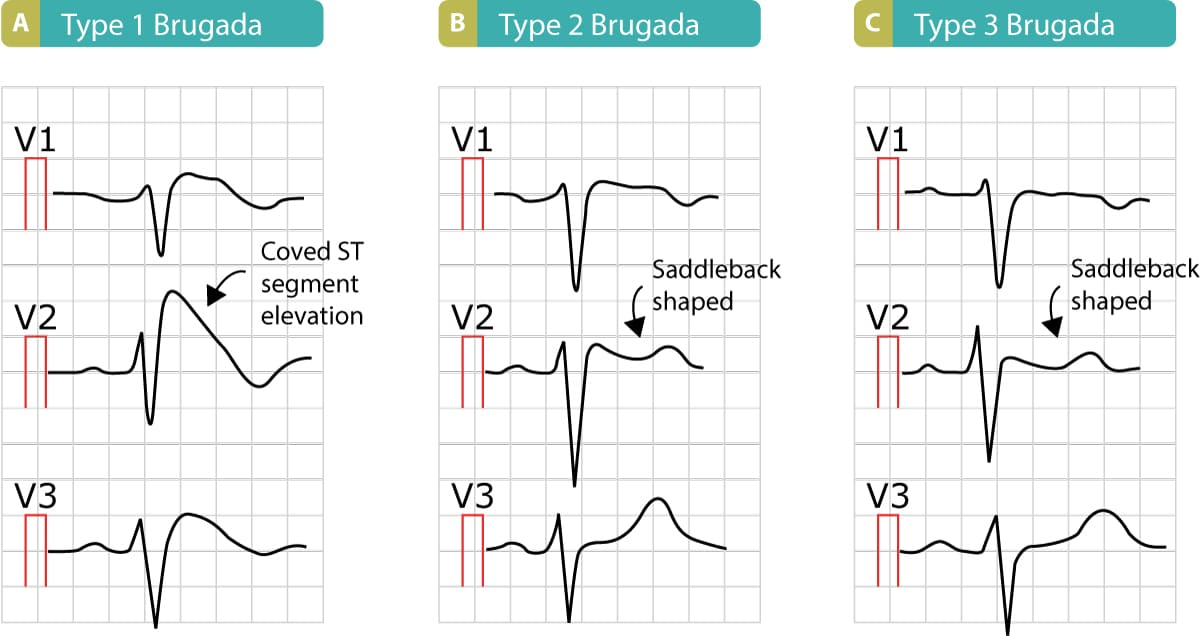
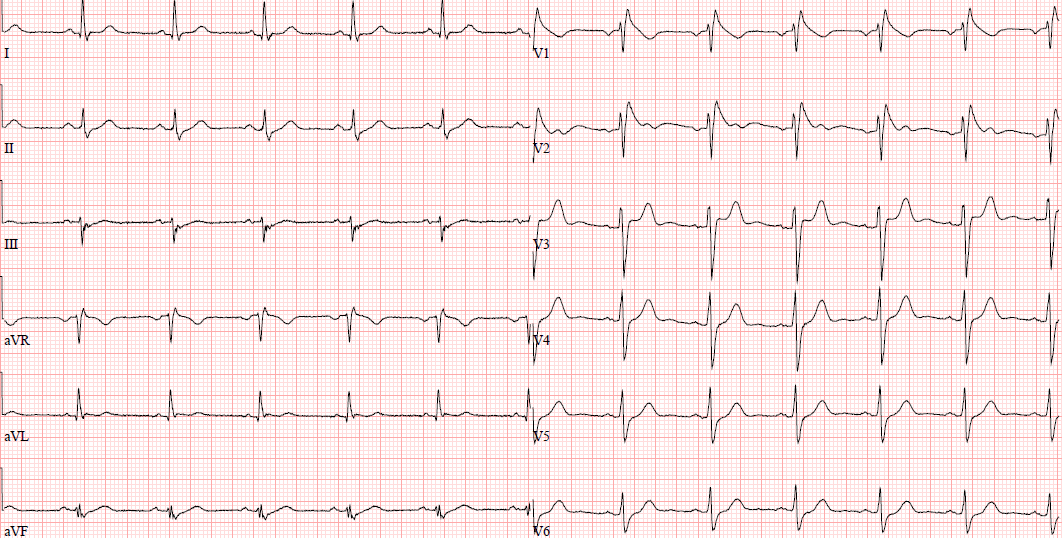
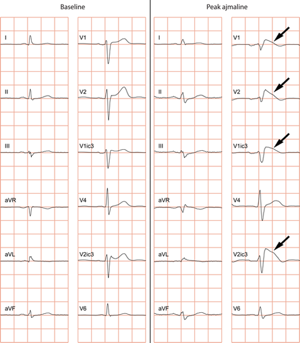
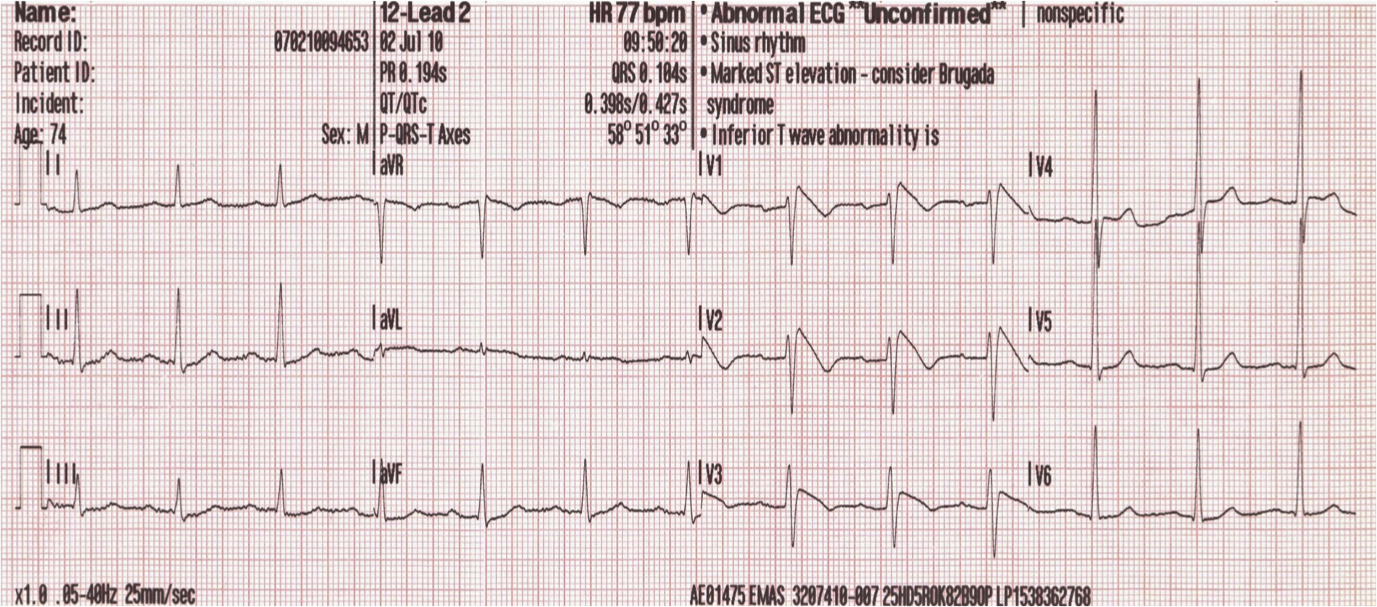
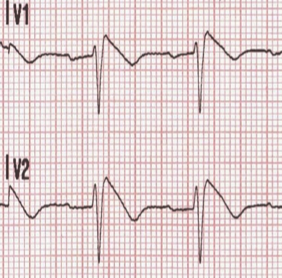
🧬 Genetics
- SCN5A mutation = most common (~30% of cases), encodes NaV1.5 sodium channel.
- Other genes: CACNA1C, CACNB2, SCN10A (less frequent).
- Inheritance: autosomal dominant with variable expression.
⚙️ Aetiology & Pathophysiology
- Defective sodium influx → imbalance in cardiac action potential → arrhythmias.
- Right ventricular outflow tract (RVOT) most affected → explains ECG changes.
- Loss-of-function sodium channel mutations on chromosome 3 (SCN5A) in many cases.
📑 Types of Brugada Syndrome
- Type 1: Classic “coved” ST elevation ≥2 mm in V1–V3 with inverted T wave → diagnostic.
- Type 2/3: “Saddleback” ST elevation → not diagnostic; may need drug provocation.
🩺 Clinical Presentation
- 💔 Sudden cardiac arrest (often during sleep/rest).
- 😵 Syncope, often with fever, exertion, or stress.
- 😮💨 Nocturnal agonal breathing → “sudden unexplained nocturnal death syndrome (SUNDS).”
- 🧩 Asymptomatic → found on family ECG or incidental screening.
🔍 Investigations
- 📈 ECG: ST elevation in V1–V3 ± RBBB pattern. QTc normal.
- 💉 Provocation: sodium channel blockers (ajmaline/flecainide) to unmask type 1 (done only in hospital).
- 🧬 Genetic testing: SCN5A mutation; guides family screening.
- 🩻 Imaging (Echo, CMR): normal structure (purely electrical disease).
- 📟 Holter/EP study: may detect inducible VT/VF.
☠️ Risk Factors for Sudden Cardiac Death (SCD)
| Risk Factor | Description |
|---|---|
| ⚡ Previous Cardiac Arrest | Strongest predictor; ICD always indicated. |
| 😵 Syncope | Unexplained fainting at rest or sleep → high risk. |
| 📈 Spontaneous Type 1 ECG | Much higher risk than drug-induced pattern. |
| 🧪 Inducible VT/VF | Arrhythmia triggered during EP study = increased risk. |
| 👨👩👧 Family History | First-degree relative with SCD <50 years. |
💊 Management
- ICD: 💉 Main treatment; for survivors of arrest, syncope + Type 1 ECG, or high-risk features.
- Lifestyle: 🚫 Avoid Brugada-triggering drugs (see BrugadaDrugs.org). 🤒 Treat fever aggressively with antipyretics. 🚫 Avoid excess alcohol, recreational drugs (cocaine especially).
- Drug Therapy: Quinidine for recurrent arrhythmias or multiple ICD shocks.
- Ablation: For patients with recurrent VF/VT or electrical storm despite ICD/medication.
- Family Screening: ECG ± genetic testing of first-degree relatives.
📚 Teaching Pearls
👉 Think of Brugada in any unexplained syncope, nocturnal arrest, or suspicious family history. 👉 It is a functional disease (electrical, not structural) → echo/MRI normal. 👉 Fever is dangerous: educate patients & families to treat aggressively. 👉 In the UK, all suspected cases should be referred to an Inherited Cardiac Conditions clinic for risk stratification & family screening. 👉 Key exam tip: the coved ST elevation in V1–V3 is diagnostic (Type 1).
🔖 References
🩺 Case 1 — Syncope in a Young Man
A 29-year-old man is brought after a syncopal episode while resting at night. Family history reveals a brother who died suddenly aged 32. ECG shows coved ST-segment elevation in V1–V3 consistent with type 1 Brugada pattern. Management: 🚑 Refer urgently to cardiology. Implantable cardioverter-defibrillator (ICD) indicated in symptomatic Brugada with syncope/ventricular arrhythmia. Lifestyle advice: avoid excessive alcohol, fever, and dehydration. Avoid: ❌ Sodium channel–blocking drugs (e.g. flecainide, procainamide, tricyclic antidepressants); avoid assuming “normal” echo excludes risk.
🩺 Case 2 — Incidental ECG Finding
A 40-year-old man undergoes ECG during a work medical, showing saddleback ST elevation in V2 suggestive of Brugada type 2 pattern. He is asymptomatic, with no family history of sudden cardiac death. Management: 🩺 Cardiology referral for further risk stratification (provocative drug testing with ajmaline/flecainide, genetic testing, electrophysiology studies). Lifestyle advice: prompt treatment of fever, avoid contraindicated drugs. Avoid: ❌ Immediate ICD insertion without symptoms or high-risk features; avoid missing the opportunity for family screening.